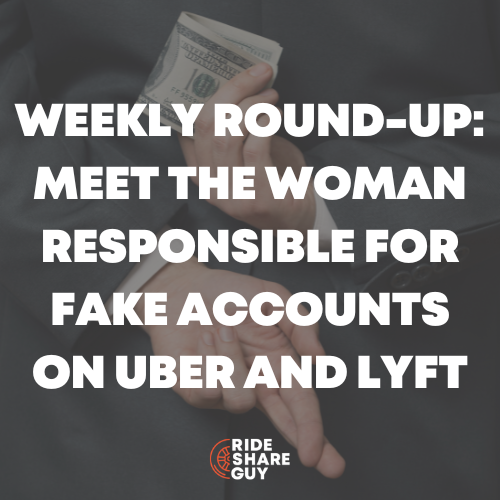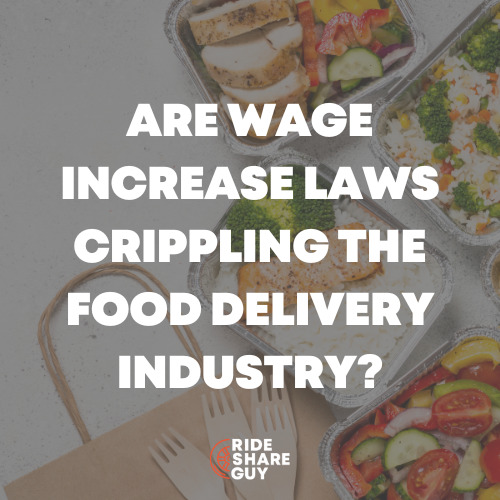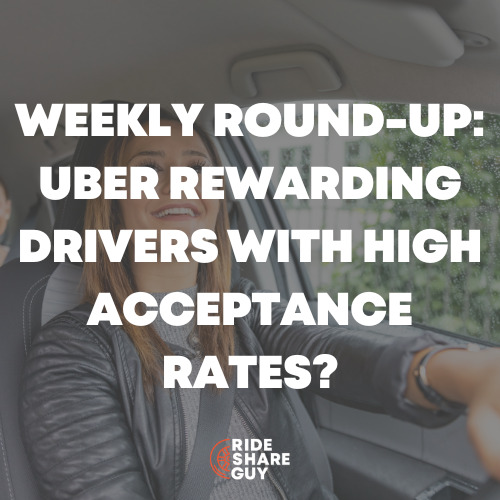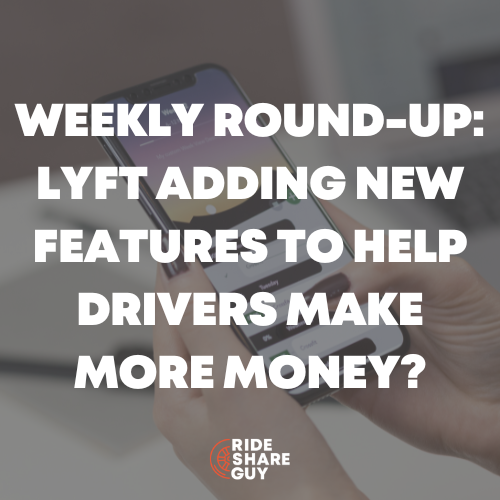Harry here. Ask a driver what he or she thinks about Uber’s rating system and you’ll get a wide variety of answers. Some think it’s ok, others think it’s completely unfair and some really love it (jk, no one really loves it). Personally, I’ve got a big problem with the lack of feedback given by Uber, and today’s top story revolves around you guessed it, ratings.

In today’s news round-up, RSG contributor, John Ince, takes a look at an article that was our most popular article on the Facebook page this week, eliciting lots of strong opinions and thoughtful discussion. Head over to Facebook to see what drivers have to say or leave your comments and thoughts below.
The Rating Game – How Uber and Its Peers Turned Us Into Horrible Bosses
Sum and Substance: The rating systems used by these companies have turned customers into unwitting and sometimes unwittingly ruthless middle managers, more efficient than any boss a company could hope to hire. They’re always there, working for free, hypersensitive to the smallest error. All the algorithm has to do is tally up their judgments and deactivate accordingly. Ratings help these companies to achieve enormous scale, managing large pools of untrained contract workers without having to hire supervisors. It’s a nice arrangement for customers too, who get cheap service with a smile — even if it’s an anxious one. But for the workers, already in the precarious position of contract labor, making every customer a boss is a terrifying prospect. After all, they — we — can be entitled jerks. “You get pretty good at kissing ass just because you have to,” an Uber driver told me. “Uber and Lyft have created this monstrous brand of customer where they expect Ritz Carlton service at McDonald’s prices.””CUSTOMERS EXPECT RITZ CARLTON SERVICE AT MCDONALD’S PRICES.” In March, when Judge Edward Chen denied Uber’s motion for summary judgement on the California drivers’ class action suit, he seized on the idea that ratings aren’t just a customer feedback tool — they represent a new level of monitoring, far more pervasive than any watchful boss. Customer ratings, Chen wrote, give Uber an “arguably tremendous amount of control over the ‘manner and means’ of its drivers’ performance.” Quoting from Michel Foucault’s Discipline and Punish, he wrote that a “state of conscious and permanent visibility assures the automatic functioning of power.
My Take: This article nails it – exactly what a lot of drivers really think and feel about ratings – it’s the the faceless dictator in their lives. The whole thing is so efficient that it’s like you’re ruled by some automated amalgam of every passenger who ever got in your car – often on the basis of feelings or criteria that had little to do with your performance as a driver.
But is it fair? Does it give too much power to the customer? What about different passengers applying different standards? What effect does it have psychologically on drivers? Is this really progress? These are the questions that should be asked and are addressed in this article.
Uber, Lyft drivers usually don’t stick around for long, survey finds
Sum and Substance: If you spend time chatting with Uber or Lyft drivers, you will find that many of them describe themselves as new to the industry. Of course, the industry itself hasn’t existed for very long – Lyft, for example, only debuted its ridesharing service in 2012 – but a new study published today by SherpaShare highlights a broader problem that on-demand companies grapple with: churn. The study, which polled 963 gig workers – 90 percent of whom worked for Lyft or Uber – found that two-thirds of those drivers have been working for less than six months, with 18 percent working for two months or less. The study also found that among those who had been driving more than three months, 41 percent reported driving less than when they started, while 35 percent reported driving more.“There’s a high degree of variability in work patterns,” says Ryder Pearce, co-founder of SherpaShare. “Workers recognize that they want to keep their options open first, even if that only means one trip or no trips during a given week. The next week, they might decide to put in 40 hours.”
That variability means that good data on “quit rates,” or how many drivers stop driving entirely or simply scale back their hours, is difficult to come by. “Rideshare by nature is a transient employment opportunity,” Harry Campbell, rideshare blogger, adds. “Most drivers aren’t looking to become career Uber drivers and in my experience, it’s most commonly used as a stepping stone to something bigger and better.”
My Take: This is the study I’ve been waiting for – independent of Uber, by SherpaShare – that gives a clear picture of the astounding rate of churn that characterizes Uber and Lyft’s relationship with drivers. The news isn’t good for Uber or Lyft. Drivers are fleeing the platform in droves. The only question is: can Uber and Lyft keep more coming in faster than those who are disenchanted and leave?
Why the Next Uber Wannabe Is Already Dead
Sum and Substance: “… while the golden era of labor is gone, the laws that birthed it are still very much a thing, and lately they’ve been chafing hard against the on-demand sector. Uber, Lyft, Instacart, and TaskRabbit are among the companies hit with class-action lawsuits like the one that did in Homejoy. Filed in California, Massachusetts, and elsewhere, they seek Social Security and Medicare contributions, gas and mileage reimbursements, and other damages. Because so many potential plaintiffs are involved–Uber has an estimated 200,000 drivers in the U.S.–the damages could be huge. The prospect of such a huge payday has understandably attracted attorneys who would be unmoved by less lucrative worker grievances. “Plaintiffs’ counsel are the labor unions of the 21st century,” grumbles one CEO whose company is a defendant. (Most of the CEOs facing lawsuits won’t talk on the record.) But courts have been receptive to misclassification suits. In September, in the most worrisome setback yet for 1099-reliant sharing-economy companies, a federal judge granted class status to Uber drivers, vastly upping the stakes on its legal defense and the likelihood it will have to settle.
My Take: A surprisingly thoughtful piece that puts the so called gig economy in historical perspective. We forget how hard factory workers, coal miners, steelworkers and others fought for worker protections. And now the new titans of tech widely ignore them under the banner of disruption. Not so fast – judges and regulators are taking a hard look at worker protections in the gig economy and their verdicts will likely determine the fate of many startups that have raised huge sums of capital.
This Is How Bad the Sharing Economy Is for Workers
Sum and Substance: Silicon Valley entrepreneurs keep telling us their way of doing business will “change the world.” And in many ways it already has, but it’s changed your world differently than it’s changed theirs. The “sharing” or “gig” economy—think Airbnb, Uber, and Taskrabbit—has made massive fortunes reducing labor to disassembled microtasks; unfortunately, it’s shrunk workers’ rights too. But as our jobs are redefined by labor-brokering platforms, some advocates are trying to redefine labor rights for a digital economy. Currently, the gig economy trades labor fluidly across online platforms, digital hiring halls where workers typically farm out their short-term gofer services: a ride offered through your private car, fishing someone’s keys out of a gutter, hand-delivering a package across town. For these nominally independent contractors, labor protections under the Fair Labor Standards Act generally don’t apply. Yet these contract jobs are at least as hierarchical as an assembly line; “independence” means you get assigned where to drive but pay your own traffic tickets, you fund your own social insurance, and if you’re sexually harassed or hurt on the job, may be left completely on your own. That’s why the National Employment Law Project (NELP) has come up with a new policy blueprint, focused on regulating the so-called “on-demand economy” of tech-driven gig employment, to put forward concrete policy models that can help restructure the “1099” contractor relationship to offer workers greater protection.
My Take: This is a good analysis of this Orwellian term that is constantly thrown around – “The Sharing Economy.” Not a whole lot of sharing takes place in these new economy companies. They’re old fashioned capitalists disguised as disruptors and efficiency experts.
Uber said to plan another $1 billion in fund-raising
Sum and Substance: Just three months after raising an enormous sum of money from investors, Uber is at it again. Uber, a ride-hailing service, is planning to raise close to $1 billion in new venture capital from investors, according to people close to the matter. Investors are looking at a valuation of $60 billion to $70 billion. If successful, the round of fund-raising would make Uber the world’s most valuable private start-up by far. A round this summer valued the company at more than $50 billion, a bit more than Facebook was valued at after its last big round of private capital fund-raising in 201
My Take: Another quarter, another billion. The Uber financing thing is getting surreal. But as long as existing investors think demand exceeds supply for Uber’s equity, they’ll be others pounding the door to get in. How long can this last? Probably until Uber starts to release financial data that shows how much they’re actually making… or losing. Then investors will pay attention…
Hey Dallas, Maybe We Should Stop Using Uber
Sum and Substance: It’s time to start paying attention to the protests. Over the past month, drivers from across Uber’s platform — black-car drivers, UberSelect luxury sedan drivers and UberX drivers who just use their personal vehicles, whatever it is — have protested at the technology company’s Dallas headquarters in the West End. Rates have dipped too low, they say, and they’re being required to pick up rides they lose money on. Uber itself, the drivers claim, is screwing them over by implying that a tip is included in Uber’s standard pricing.
My Take: There does seem to be a rising tide of discontent among the riders. The San Francisco protest hardly registered a blip in the larger scheme of things, but protests elsewhere are being heard and felt. The media is picking up on this undercurrent. This article is but one more example of driver dissatisfaction. Sooner or later, Uber management is going to have to face this issue. Drivers can either be Uber’s best brand ambassadors or Uber’s worst enemies. The ball’s in Uber’s court.
What do you guys think about the week’s top stories?
-John @ RSG




